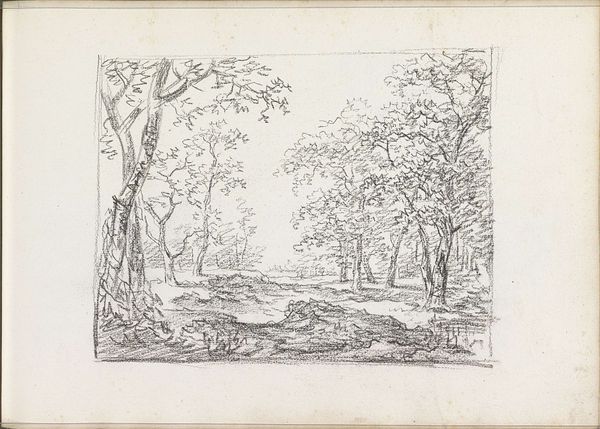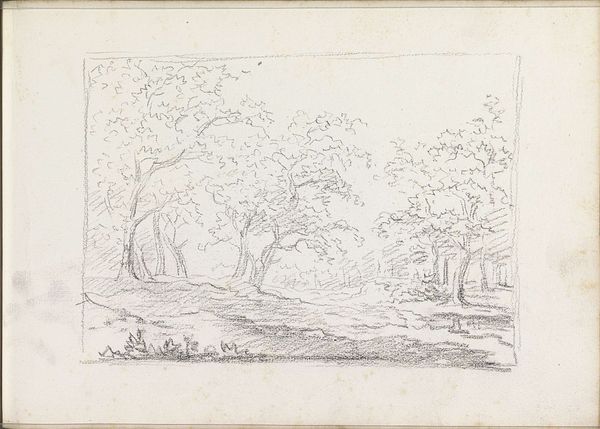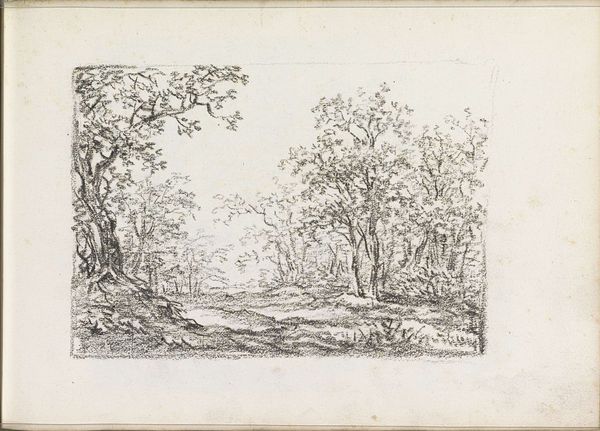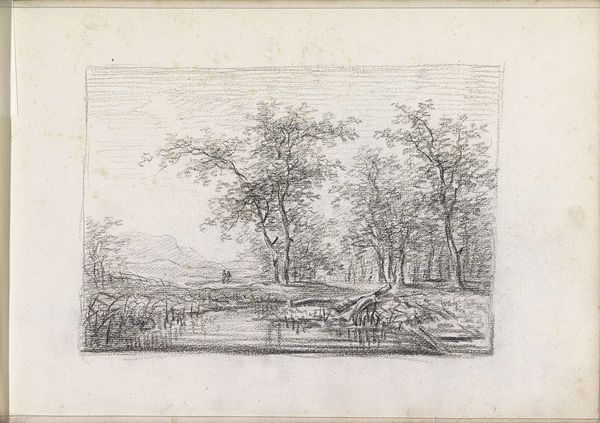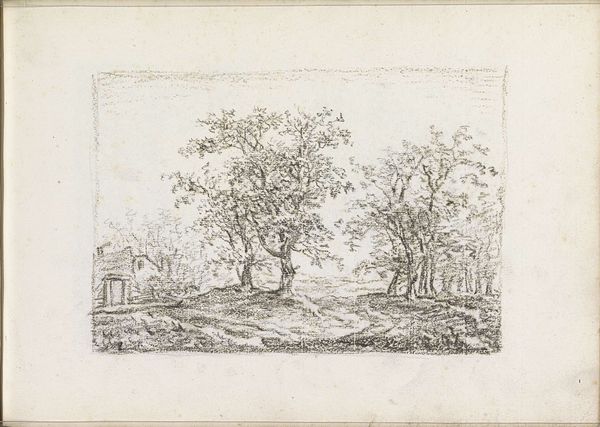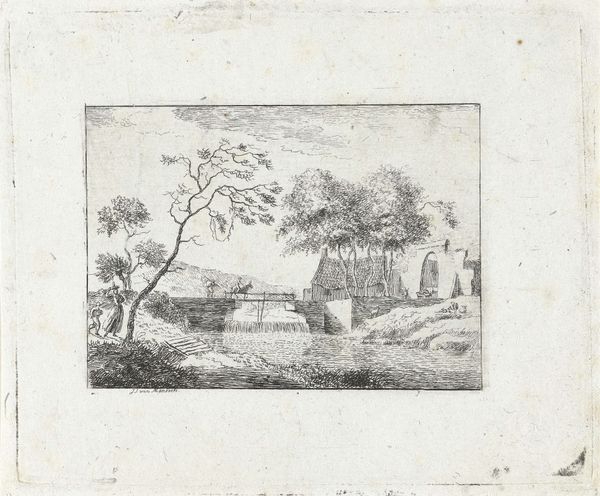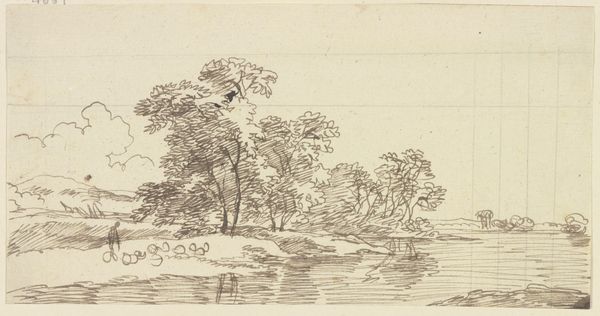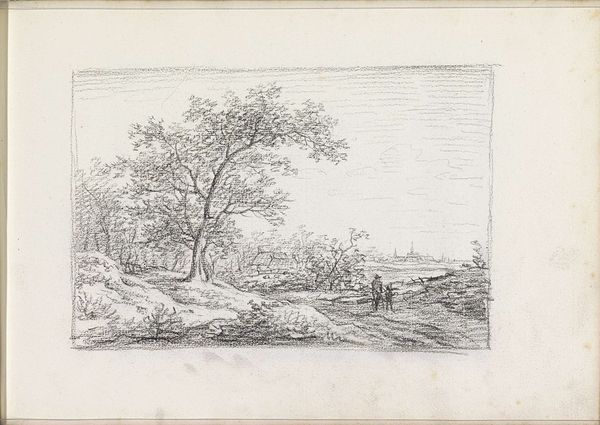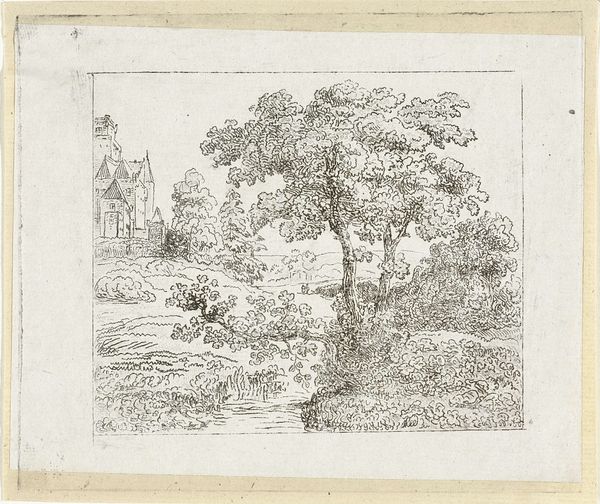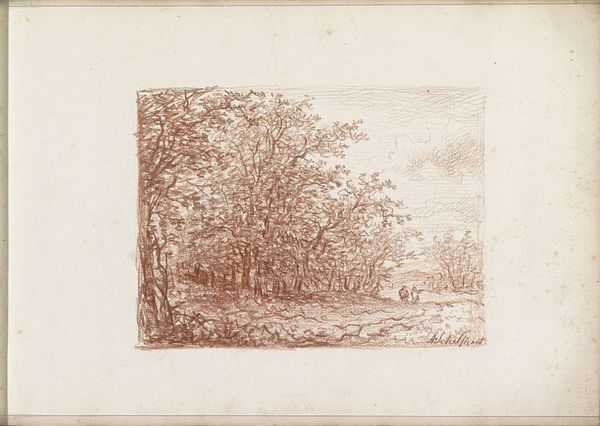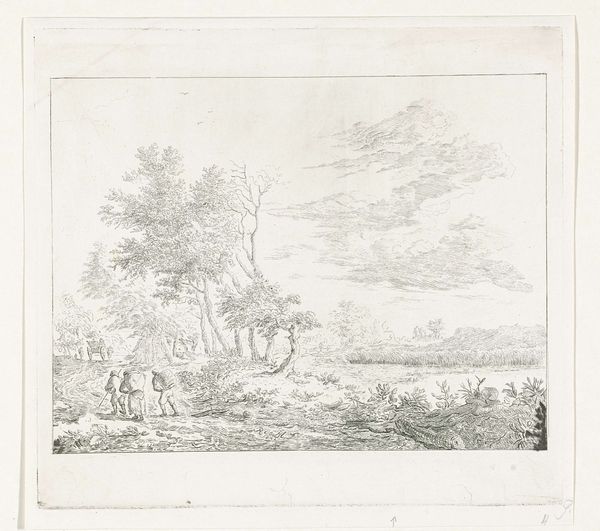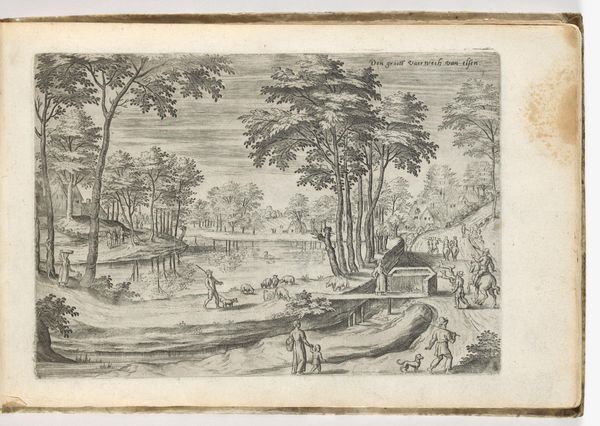
#
toned paper
#
light pencil work
#
pen sketch
#
pencil sketch
#
personal sketchbook
#
ink drawing experimentation
#
pen-ink sketch
#
pen work
#
sketchbook drawing
#
sketchbook art
Copyright: Rijks Museum: Open Domain
Editor: So this is Andreas Schelfhout’s “Landscape with a bridge over a river,” from around 1811, made with pen and pencil on toned paper. It’s delicate. I’m struck by the artist's hand, you can almost feel the quickness of the sketch. What stands out to you about it? Curator: It’s crucial to consider the material conditions of its creation. The "quickness," as you put it, speaks volumes. Schelfhout wasn’t producing a polished oil painting for a wealthy patron here. This sketch, likely from a personal sketchbook, points towards a different kind of artistic labor, one more akin to craft. Notice the readily available, inexpensive materials: pencil and ink on toned paper. What does this suggest about Schelfhout’s artistic process and intended audience at this stage? Editor: Maybe this was for personal exploration, a way to study the landscape and prepare for larger works. Does that downplay its artistic value, since it wasn't intended as a "finished" piece? Curator: Absolutely not! We need to challenge these hierarchies between "high art" and so-called "lesser" forms like sketches. Consider the labor involved, the artist's skilled hand carefully rendering form with simple tools. Doesn't the materiality – the humble paper and graphite – tell us something about artistic production in this period? Editor: You’re right. Thinking about the context – the materials, the purpose – it reframes my understanding. It’s not just a study; it’s a record of Schelfhout’s interaction with the landscape, a direct connection to his process. Curator: Precisely. And understanding the means of production, the material conditions, brings us closer to appreciating the work on its own terms, resisting established notions of what constitutes "art." Editor: I've never thought about a sketch this way. I see how examining the materials and process can open up a new way to think about art making. Thanks!
Comments
No comments
Be the first to comment and join the conversation on the ultimate creative platform.
